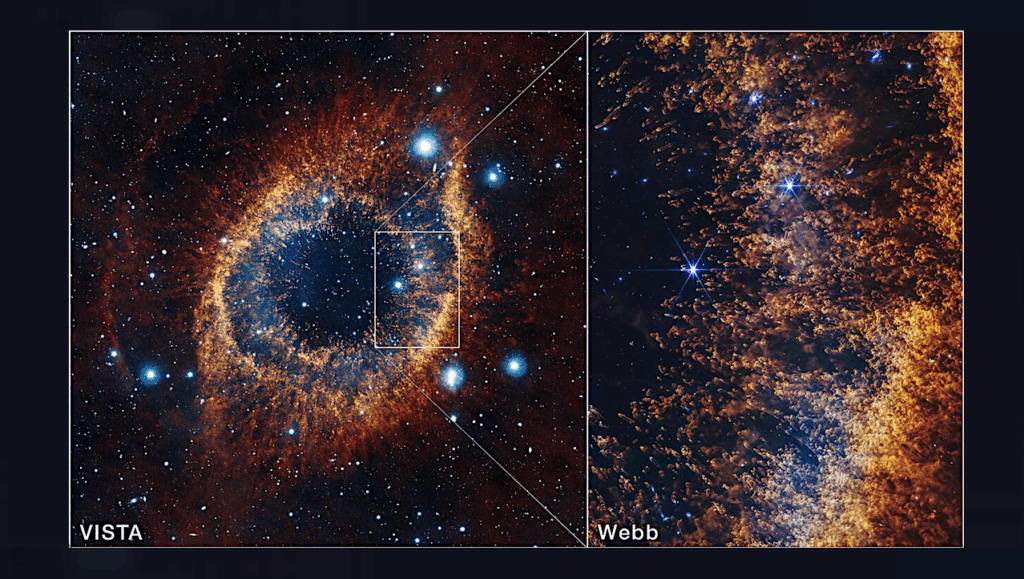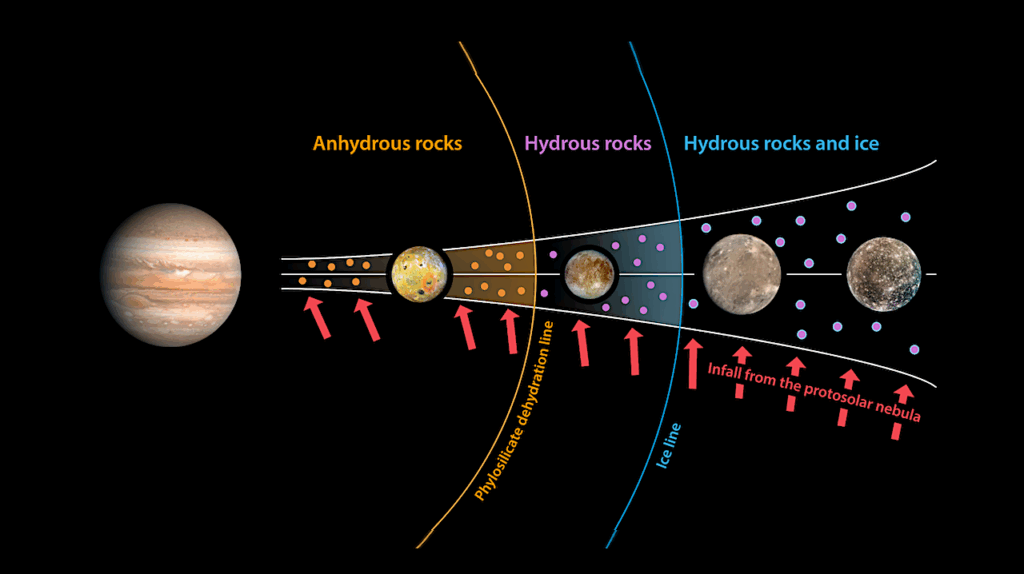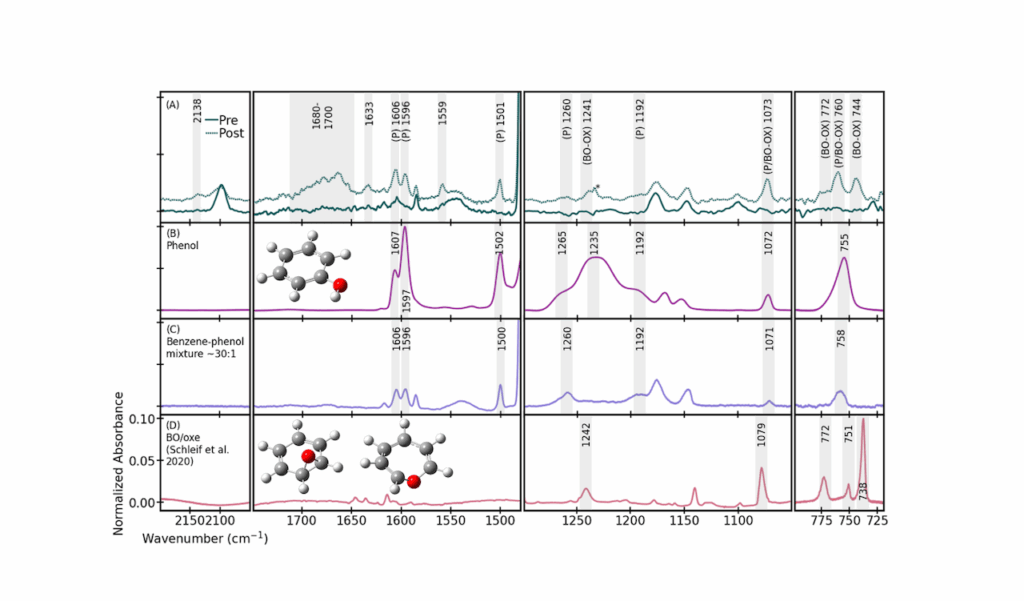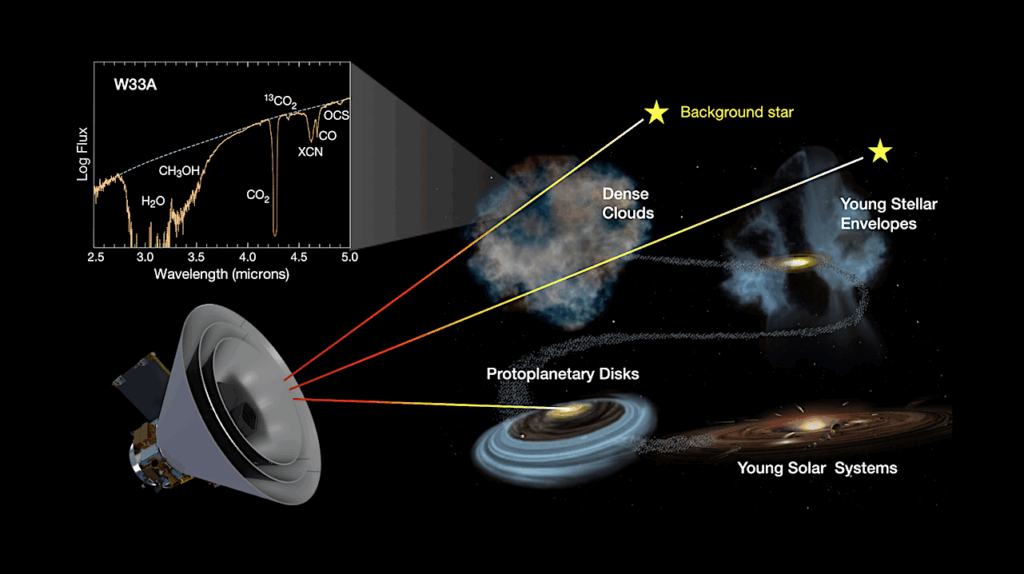15NH3 In The Atmosphere Of A Cool Brown Dwarf

Brown dwarfs serve as ideal laboratories for studying the atmospheres of giant exoplanets on wide orbits as the governing physical and chemical processes in them are nearly identical. Understanding the formation of gas giant planets is challenging, often involving the endeavour to link atmospheric abundance ratios, such as the carbon-to-oxygen (C/O) ratio, to formation scenarios.
However, the complexity of planet formation requires additional tracers, as the unambiguous interpretation of the measured C/O ratio is fraught with complexity. Isotope ratios, such as deuterium-to-hydrogen and 14N/15N, offer a promising avenue to gain further insight into this formation process, mirroring their utility within the solar system. For exoplanets only a handful of constraints on 12C/13C exist, pointing to the accretion of 13C-rich ice from beyond the disks’ CO iceline. Here we report on the mid-infrared detection of the 14NH3 and 15NH3 isotopologues in the atmosphere of a cool brown dwarf with an effective temperature of 380 K in a spectrum taken with the Mid-InfraRed Instrument of the James Webb Space Telescope.
As expected, our results reveal a 14N/15N value consistent with star-like formation by gravitational collapse, demonstrating that this ratio can be accurately constrained. Since young stars and their planets should be more strongly enriched in the 15N isotope, we expect that 15NH3 will be detectable in a number of cold, wide-separation exoplanets.
David Barrado, Paul Mollière, Polychronis Patapis, Michiel Min, Pascal Tremblin, Francisco Ardevol Martinez, Niall Whiteford, Malavika Vasist, Ioannis Argyriou, Matthias Samland, Pierre-Olivier Lagage, Leen Decin, Rens Waters, Thomas Henning, María Morales-Calderón, Manuel Guedel, Bart Vandenbussche, Olivier Absil, Pierre Baudoz, Anthony Boccaletti, Jeroen Bouwman, Christophe Cossou, Alain Coulais, Nicolas Crouzet, René Gastaud, Alistair Glasse, Adrian M. Glauser, Inga Kamp, Sarah Kendrew, Oliver Krause, Fred Lahuis, Michael Mueller, Göran Olofsson, John Pye, Daniel Rouan, Pierre Royer, Silvia Scheithauer, Ingo Waldmann, Luis Colina, Ewine F. van Dishoeck, Tom Ray, Göran Östlin, Gillian Wright
Comments: Accepted by Nature. 28 pages, 7 figures, uses nature3.cls
Subjects: Earth and Planetary Astrophysics (astro-ph.EP); Solar and Stellar Astrophysics (astro-ph.SR)
Cite as: arXiv:2311.08054 [astro-ph.EP] (or arXiv:2311.08054v1 [astro-ph.EP] for this version)
Related DOI:
https://doi.org/10.1038/s41586-023-06813-y
Focus to learn more
Submission history
From: David Barrado
[v1] Tue, 14 Nov 2023 10:23:49 UTC (4,235 KB)
https://arxiv.org/abs/2311.08054
Astrobiology, Astrochemistry








